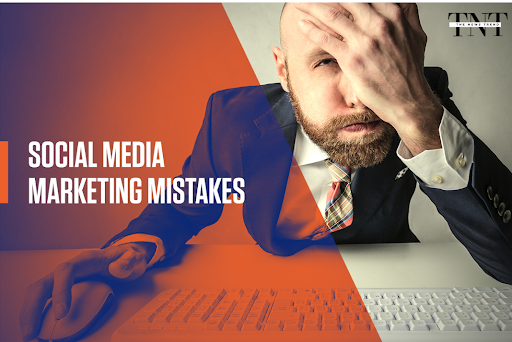Introduction
In the fast-paced world of digital marketing, even minor missteps can derail campaigns, waste budgets, and damage brand credibility. As algorithms evolve and consumer behaviors shift, staying ahead requires avoiding common pitfalls. This guide uncovers the top 20 marketing mistakes businesses make in 2025—and actionable solutions to turn your strategy into a revenue-driving powerhouse.
1. Failing to Set SMART Goals
The Mistake: Vague objectives like “increase sales” or “boost brand awareness” lack direction.
Why It’s Costly: Without Specific, Measurable, Achievable, Relevant, and Time-bound (SMART) goals, teams can’t prioritize tasks or measure success.
Fix It: Define goals like “Increase organic website traffic by 30% in Q3 via SEO and blog content.”
2. Skipping Audience Research & Segmentation
The Mistake: Assuming a “one-size-fits-all” approach works for diverse customer groups.
Why It’s Costly: Generic messaging fails to resonate, leading to low engagement.
Fix It: Use surveys, analytics, and tools like Google Analytics to segment audiences by demographics, behavior, or purchase history.
3. Neglecting Mobile Optimization
The Mistake: Overlooking mobile users in a world where 60% of web traffic comes from smartphones.
Why It’s Costly: Google prioritizes mobile-first indexing, and poor mobile experiences drive bounce rates up.
Fix It: Adopt responsive design, compress images, and simplify navigation for thumb-friendly browsing.
4. Inconsistent Branding Across Channels
The Mistake: Using mismatched logos, tones, or colors on social media, emails, and websites.
Why It’s Costly: Confusion erodes trust; 90% of consumers expect uniform brand experiences.
Fix It: Create a brand style guide and train teams to maintain visual/verbal consistency.
5. Ignoring Analytics & Conversion Tracking
The Mistake: Flying blind without monitoring KPIs like click-through rates or cost per lead.
Why It’s Costly: You’ll waste budget on underperforming campaigns.
Fix It: Use Google Analytics 4, UTM parameters, and dashboards to track real-time data.
6. Underestimating Social Media’s Role
The Mistake: Posting sporadically or avoiding platforms like TikTok and LinkedIn.
Why It’s Costly: 77% of consumers discover brands via social media.
Fix It: Align platforms with your audience—e.g., B2B brands thrive on LinkedIn; Gen Z engages on TikTok.
7. Publishing Low-Quality Content
The Mistake: Prioritizing quantity over value with generic blogs or repetitive videos.
Why It’s Costly: Poor content hurts SEO and fails to position you as an industry leader.
Fix It: Invest in original research, storytelling, and multimedia (e.g., infographics, podcasts).
8. Overcomplicating CTAs & Messaging
The Mistake: Using jargon-filled copy or burying calls-to-action (CTAs).
Why It’s Costly: Confused visitors won’t convert.
Fix It: Use clear verbs like “Download Now” or “Start Your Free Trial” above the fold.
9. Avoiding A/B Testing
The Mistake: Sticking to one headline, image, or landing page design.
Why It’s Costly: You’ll miss opportunities to optimize conversion rates.
Fix It: Test variables like email subject lines, ad creatives, or CTA button colors.
10. Over-Reliance on Organic Reach
The Mistake: Ignoring paid ads while waiting for SEO or social media to deliver results.
Why It’s Costly: Organic reach on platforms like Facebook is below 6%.
Fix It: Blend organic efforts with targeted PPC, retargeting, or influencer collaborations.
11. Expecting Overnight Success
The Mistake: Abandoning strategies after a month due to impatience.
Why It’s Costly: SEO and brand-building require 6–12 months to yield ROI.
Fix It: Set realistic timelines and focus on incremental growth.
12. Forgetting Existing Customers
The Mistake: Chasing new leads while neglecting loyalty.
Why It’s Costly: Retaining customers is 5x cheaper than acquiring new ones.
Fix It: Launch email nurture campaigns, loyalty programs, or exclusive discounts.
13. Disregarding Competitor Analysis
The Mistake: Operating in a vacuum without benchmarking rivals.
Why It’s Costly: You’ll miss trends or gaps in the market.
Fix It: Use tools like SEMrush or Ahrefs to analyze competitors’ keywords, ads, and content.
14. Poor Website User Experience (UX)
The Mistake: Slow load times, broken links, or cluttered layouts.
Why It’s Costly: 53% of users abandon sites that take over 3 seconds to load.
Fix It: Audit site speed, simplify navigation, and implement breadcrumb menus.
15. Ignoring Product-Market Fit
The Mistake: Marketing a product without addressing customer pain points.
Why It’s Costly: Even brilliant campaigns fail if the product doesn’t resonate.
Fix It: Gather feedback via beta testing or surveys before launching.
16. Inadequate Budget Allocation
The Mistake: Spending haphazardly without prioritizing high-ROI channels.
Why It’s Costly: Wasted funds on underperforming tactics.
Fix It: Allocate budgets based on historical data and industry benchmarks.
17. Overlooking Email Marketing
The Mistake: Dismissing email as “old-school” despite its
42 ROI for every 1 spend.
Why It’s Costly: Missed direct access to engaged audiences.
Fix It: Segment email lists and personalize subject lines/content.
18. Resisting Market Trends
The Mistake: Avoiding AI, voice search, or interactive content.
Why It’s Costly: Early adopters gain a competitive edge.
Fix It: Experiment with chatbots, video SEO, or AR experiences.
19. Hiding Social Proof
The Mistake: Not showcasing reviews, case studies, or client logos.
Why It’s Costly: 88% of consumers trust reviews as much as personal recommendations.
Fix It: Embed testimonials on landing pages and share user-generated content.
20. Being Too Modest in Self-Promotion
The Mistake: Shying away from highlighting USPs or success stories.
Why It’s Costly: Competitors will overshadow your brand.
Fix It: Celebrate milestones, client wins, and media features on social channels.
Conclusion
Avoiding these 20 marketing mistakes can transform your strategy from stagnant to stellar. Regularly audit campaigns, stay agile with trends, and prioritize customer-centricity. Remember, marketing excellence isn’t about perfection—it’s about learning, iterating, and staying ahead in 2024’s dynamic landscape.
FAQ Section
Q1: How often should I review my marketing strategy?
Aim for quarterly audits to assess KPIs, budget allocation, and emerging trends.
Q2: Which metrics matter most for small businesses?
Focus on cost per acquisition (CPA), conversion rates, and customer lifetime value (CLV).
Q3: Can I recover from past marketing mistakes?
Absolutely! Use analytics to identify weaknesses and relaunch refined campaigns.
Optimize your strategy today—avoid these pitfalls and watch your brand soar!



